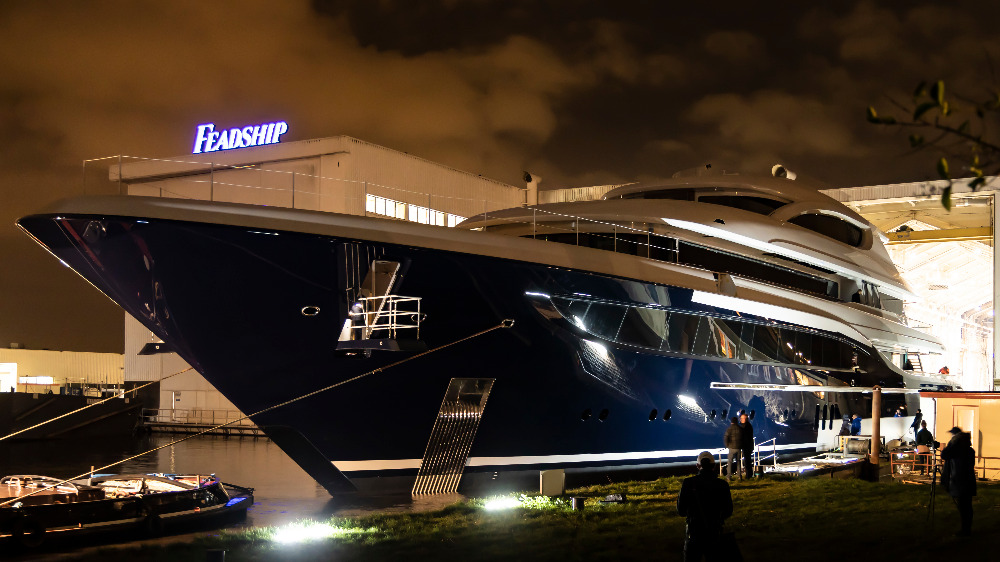The two pillars
There are two profound paradigms that will shape our industry’s future, says Feadship's Bram Jongepier…
While much of our work currently in relation to innovation revolves around specific client requests for their Feadship, I’d like to use this opportunity to look into the future at two trends that will unavoidably affect all major builders: sustainability and digitalisation.
The development of the industry-wide measurement tool called YETI (Yacht Environmental Transparency Index) continues apace under the auspices of the Water Revolution Foundation. This tool will be sensitive enough within the next one or two years to discriminate between different options and stimulate owners to adopt more sustainable choices as they see rewards for their investment. A recognised rating system will indicate what constitutes a good yacht, in environmental terms, with a language understood and accepted across the industry.
Fuel flexibility is another big issue. Fossil fuels are on the way out and boats launched in five years’ time need to be constructed to use whichever replacement is dominant within the proceeding decade. This could well be methanol, which can be supplied in quite a sustainable way and may allow us to design yachts with a much-reduced environmental impact. You need to get cracking now if you want to futureproof a 2025 yacht for methanol use in 2030. But until we know which fuel is the main player, we need to find ways to be flexible. The easiest option is implementing an electrical architecture so that, should highly efficient fuel cells running on methanol evolve, these fuel cells can replace the generators you’re currently installing.
 Bram Jongepier, Feadship, senior specialist, De Voogt Naval Architects
Bram Jongepier, Feadship, senior specialist, De Voogt Naval Architects
Forward thinking is also required in relation to materials. Feadship’s lifecycle assessment studies have shown that the majority of eco-unfriendly impact is caused by a small number of materials, for instance steel and aluminium.
Current contract specs assert that all materials must be new but I think this should be reworded as these structural materials will be available in recycled format soon and our industry needs to see if they are suitable for boats. For instance, while doubts still exist about the corrosion levels and mechanical properties of recycled aluminium, can this be compensated for by our coating materials and maintenance abilities? Can we allow a little less mechanical strength and a bit more weight if it results in a 90 per cent reduction in the impact of manufacturing all-new aluminium?
Sustainability also involves more than just installing an efficient engine on board; it revolves around creating efficient overall vessels that take into account all factors which influence each other and make up the whole. We are now looking beyond the efficiency of this ‘system of systems’ to operational profiles, and we see the same trend in, for instance, the offshore sector. This means not giving priority to a yacht performing optimally at full speed with a full quota of guests on the warmest day of the year in the hottest at-sea location, like Northern Australia. Look instead at the spread of operational conditions and optimise performance over that spread; in other words, take a lifecycle approach that defines the operational profile and design the yacht accordingly.
Another process due to accelerate as the decade unfolds is the way the digital world is integrated within design and operations. Current systems are like neighbours who rarely talk; we’re developing systems that oversee all digital systems. We already have several boats in the Feadship fleet trialling structural monitoring – measuring the stresses a yacht faces as she goes through the waves and rests in the sun. This data provides feedback to us as designers and to the management company on the loads the boat encounters. Should a discussion arise about a vibration, we can examine the monitoring system and see that it is, for instance, caused by damage to the propellers showing up on the altered frequency profile. This kind of supervision and diagnosis allows us to increase support within our onshore operational assistance programme and give advice to owners/operators in areas such as planned maintenance.
These same systems also know which environment a boat is in. Radars see the actual wave pattern and the on-board system knows the yacht’s response in terms of motion and can suggest, say, anchoring at a different orientation to increase comfort. In addition to this real-time advisory system we can also predict comfort levels and propose the best position to launch tenders or receive a helicopter. Add into the mix the Feadship weather forecast service that we’ve already developed, and boats can predict wave heights and direction in different locations. Uses range from knowing where best to sip martinis, to which route will save on fuel consumption.
Optimising power use in this way obviously brings us back to sustainability and makes the circle round. I don’t think we’ll see a fully autonomous superyacht anytime soon but some of the clear benefits of the autonomous shipping movement are already on board.
Profile links
NEW: Sign up for SuperyachtNewsweek!
Get the latest weekly news, in-depth reports, intelligence, and strategic insights, delivered directly from The Superyacht Group's editors and market analysts.
Stay at the forefront of the superyacht industry with SuperyachtNewsweek
Click here to become part of The Superyacht Group community, and join us in our mission to make this industry accessible to all, and prosperous for the long-term. We are offering access to the superyacht industry’s most comprehensive and longstanding archive of business-critical information, as well as a comprehensive, real-time superyacht fleet database, for just £10 per month, because we are One Industry with One Mission. Sign up here.
Related news
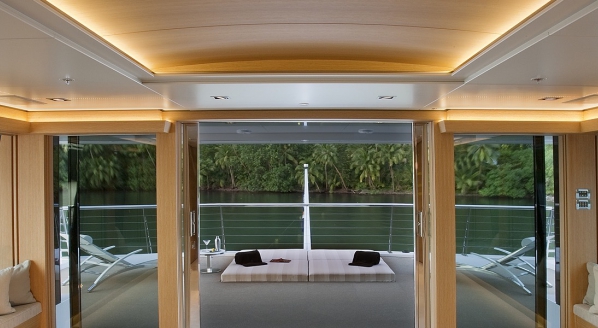
Fastmount adds to its metal range
Two new surface-fix clips enable the rapid installation of extremely thin or honeycomb panels
Design

Polar expedition cruise vessels set clean power generation example
Wabtec Corporation’s Sander Jacobs says superyachts don't need to compromise on comfort for the environment
Technology

Today’s technology uptake driven by sustainability
Eco-efficiency is a key consideration in a sector where many new technologies are trialled, says Engel-Jan de Boer, Lloyd’s Register yacht segment manager
Owner
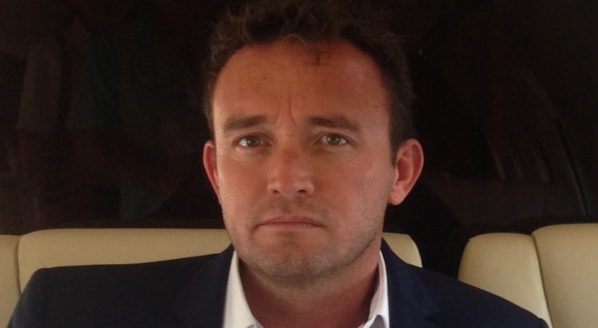
Giant leaps
Purposely electing to operate in an environment of extreme pressure is not for the fainthearted, but at Triton Submarines, Craig Barnett finds it offers extraor
Design
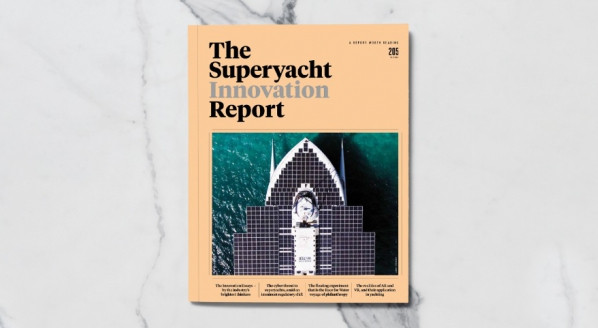
Innovation and regulation go hand in hand
The first in a series of innovation essays from The Superyacht Innovation Report
Business
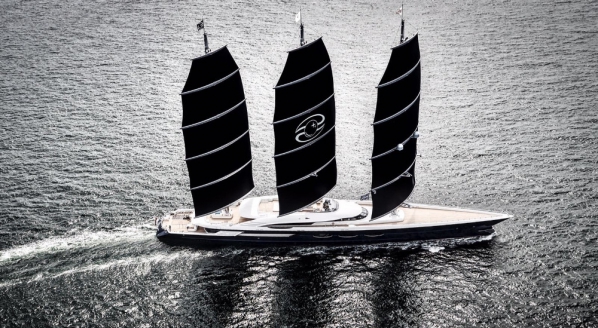
Black Pearl: paving the way to a sustainable future
Captain of 107m Black Pearl, Chris Gartner, reveals the yacht’s impact on the superyacht market since its delivery
Crew
Related news
Fastmount adds to its metal range
5 years ago
Giant leaps
5 years ago
Innovation and regulation go hand in hand
5 years ago
NEW: Sign up for
SuperyachtNewsweek!
Get the latest weekly news, in-depth reports, intelligence, and strategic insights, delivered directly from The Superyacht Group's editors and market analysts.
Stay at the forefront of the superyacht industry with SuperyachtNewsweek


